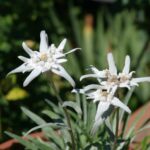Wishbone flowers, also known as Torenia fournieri, are beautiful and plentiful blooms that come in a variety of colors. With their bright and cheerful appearance, they make an excellent addition to any garden. As with most plants, there are certain considerations to take into account when growing wishbone flowers. In this article, we will discuss the basics of growing and caring for these delightful plants.
A specialist in botany and gardening can provide invaluable insights into the proper care of wishbone flowers. With the right knowledge, you can ensure your plants flourish in all conditions. The key is understanding the unique needs of wishbone flowers, such as soil type and water requirements. We will explore these topics and more so that you can get the most out of your wishbone flower garden!
Finally, it’s important to remember that nurturing plants isn’t just about providing them with the ideal environment – it’s also about serving others. When you share your passion for gardening with friends or family members, you’re helping spread joy to those around you. Caring for wishbone flowers is a great way to bring people together and show them how much you care!
Overview Of Wishbone Flowers
Wishbone flowers, also known as Torenia, are popularly grown for their bright and vibrant colors. There are over 30 species of this perennial flower and it’s a favorite among gardeners from around the world. According to research, wishbone flowers can be found in scattered locations of North America, Asia, Australia and Central America.
When it comes to growing wishbone flowers, the type of location is important. They prefer partially shaded areas with well-drained soil and moisture levels that don’t stay consistently wet. If you provide them with these conditions, you’ll be rewarded with a showy display of color throughout the summer months. Planting them in containers is a great way to have easy access for maintenance when needed.
Regular fertilization is essential for wishbone flowers since they’re heavy feeders. During each season’s growth cycle, they need to replenish their nutrients to ensure they remain healthy and vibrant looking all year round. Feed your plants every two weeks using water-soluble fertilizer or slow-release fertilizer according to manufacturer instructions.
With proper care and attention, your wishbone flowers will reward you with an abundance of colorful blooms that will make any garden look stunning!
Choosing A Location For Wishbone Flowers
Choosing the right location for your wishbone flower is a key step in ensuring its success. As wise gardeners know, having a sense of place is essential in creating a beautiful and bountiful garden. With this in mind, let’s take a look at how to find that perfect patch for these unique flowers.
Firstly, it’s important to recognize that wishbone flowers require full sunlight when planted outdoors. Thus, if you’re looking to add some vibrancy to your garden, choose an area where there will be plenty of sunshine throughout the day. Secondly, as with any flower or plant, it’s essential to make sure the soil is well-drained and rich in organic matter. Thirdly, since wishbone flowers tend to spread quickly once established, be sure to give them plenty of space for root growth. Finally, you’ll want to keep in mind that although they can tolerate dry conditions, they prefer moist soil and regular watering during the summer months.
By following these simple guidelines when selecting the perfect spot for your wishbone flower, you’ll be well on your way to achieving garden bliss!
Planting Wishbone Flowers
When planting wishbone flowers, it is essential to keep a few key points in mind. First, it is important to select the right soil for these plants. Wishbone flowers thrive in well-draining soil that retains moisture. When preparing the soil, mix in some organic matter such as compost or peat moss to improve drainage and aeration. It is also important to select an area that receives full sunlight for at least 6 hours per day for optimal growth.
Once the soil has been properly prepared and your location selected, you can begin planting your wishbone flowers. Plant seeds directly into the garden approximately 1/4 inch deep and water thoroughly after planting. The seeds will sprout within 7-14 days depending on conditions such as temperature and humidity. When transplanting seedlings, take care not to damage their fragile roots!
It is important to make sure your wishbone flowers are watered regularly during their growing season; this will ensure they remain healthy and vibrant. To get them off to a good start, fertilize them with a balanced fertilizer monthly during their first year of growth. This will provide nutrients necessary for growth and flowering throughout the season. With proper attention, your wishbone flower plants should produce lush foliage and beautiful blooms all summer long! Next up: watering and fertilizing wishbone flowers – two steps necessary for keeping these delicate plants healthy and happy!
Watering And Fertilizing Wishbone Flowers
Watering and fertilizing wishbone flowers is like a delicate dance. You need to know when to step in and when to step back, just like an expert ballroom dancer. Here are four key requirements for keeping your wishbone flowers healthy:
Watering: Wishbone flowers should be watered regularly and thoroughly during the growing season. Water deeply, so the moisture can penetrate the roots. Make sure the soil remains moist but not wet, as too much water can cause root rot.
Fertilizer: Although wishbone flowers don’t require a lot of fertilizer, you can give them a light feeding every few weeks or so with a balanced liquid fertilizer diluted to half strength.
Mulching: When planting wishbone flowers, apply a 2-inch layer of mulch around the plant throughout the growing season. This helps retain moisture and keep weeds at bay.
Deadheading: Deadheading spent blooms helps encourage more flowering all season long. Cut off any faded or dead blooms as soon as you notice them, so that the plant has energy to produce more flowers instead of setting seed.
By providing these essential care needs for your wishbone flowers, you will ensure they thrive in your garden and provide beautiful blooms all summer long! Next up is learning how to prevent common pests and diseases from affecting your plants’ health.
Common Pests And Diseases Of Wishbone Flowers
When it comes to wishbone flowers, one of the most important factors for successful growth is managing pests and diseases. The good news is that this species of flower is generally resistant to most common problems. However, there are a few things that gardeners should be aware of.
First, be on the lookout for aphids. These small insects feed on the leaves and stems of wishbone flowers and can cause stunted or distorted growth. To control them, spray affected plants with insecticidal soap or a low-toxicity insecticide such as Neem oil.
In addition to aphids, other common pests include slugs and snails, which can cause major damage to plants if left unchecked. To control these pests, set out beer traps or lay down slug bait around the base of plants.
Finally, fungal diseases can be a problem for wishbone flowers in humid climates. The best way to prevent fungal disease is by ensuring adequate airflow around plants and avoiding wetting the foliage when watering. Here are some tips for controlling fungal diseases: •tRemove any dead or diseased plant material from the area immediately •tAvoid overhead irrigation •tProvide plenty of air circulation around plants •tWater at soil level only •tApply fungicides if necessary Taking these steps will help ensure that your wishbone flowers remain healthy throughout their growing season. By following these guidelines, you’ll be able to enjoy beautiful blooms in your garden with minimal effort! With proper care and attention, you’ll be able to reap the rewards of your hard work soon enough!
Controlling Weeds In The Flower Bed
Controlling weeds in the flower bed is essential to the successful cultivation of wishbone flowers. Weeds can quickly choke out young plants, making it difficult for them to thrive. To ensure that your wishbone flowers have enough space and resources to grow, it is important to keep the area free of competing vegetation. One way to do this is through manual weeding, which involves removing unwanted plants from the bed by hand or with a hoe. Mulching around your plants can also help reduce weed growth by blocking light from reaching weed seeds near the surface of the soil. Additionally, applying an herbicide is another option for controlling weeds in areas where manual weeding cannot be done regularly.
It is important to use herbicides with caution when growing wishbone flowers as they can be damaging to beneficial insects such as bees and other pollinators. In addition, some herbicides may actually harm or kill your wishbone flowers if used too frequently or at too high of a concentration. Therefore, it is best to consult with an expert on how best to use these products without risking harm to your plants or their environment.
Overall, keeping weeds under control in a wishbone flower bed requires diligence and dedication throughout the entire growing season. The best defense against weed growth is prevention through mulching and proper spacing between plants. If manual weeding becomes necessary, make sure to take care not to disturb or damage any of your wishbone flowers while doing so. And if you opt for using herbicides, be sure get advice from an experienced gardener before applying them in the garden. With careful attention and regular maintenance, you will be able to keep weeds under control and ensure that your wishbone flowers have everything they need to thrive!
Pruning And Deadheading Wishbone Flowers
Pruning and deadheading are important tasks for keeping wishbone flowers looking their best. The process involves removing dead or dying blooms, as well as trimming the foliage to promote new growth. Here are a few tips for pruning and deadheading wishbone flowers:
Use sharp, clean pruners when cutting back plants. This will help prevent damage to the stems and help ensure a clean cut.
Deadhead spent blooms with scissors or your fingers by pinching off the flower head at its base. This encourages more blooms to form on the plant and helps it look tidy in the garden.
Trim back foliage that is overgrown to promote new growth and maintain an attractive shape in the flower bed. Be careful not to trim too much, as this can damage the plant.
Fertilize once a month during the growing season with an all-purpose fertilizer to keep your wishbone flowers looking healthy and vibrant throughout the year.
These simple steps are essential for maintaining a beautiful display of wishbone flowers in your garden or landscape. With proper care, these cheerful little plants will bloom from spring through fall and bring a splash of color to any outdoor space! Now that we have covered pruning and deadheading, let’s move on to propagating these attractive little flowers so you can enjoy them for years to come!
Propagating Wishbone Flowers
One theory that is often discussed by specialist in botany and gardening is whether propagating wishbone flowers can be done through cuttings. The truth is that while it may take some effort, these fragrant plants are relatively easy to propagate.
The first step in propagating wishbone flowers is to take a cutting from an established plant. Choose a stem with at least three sets of leaves as this will ensure that the root system develops properly. Once you have the cutting, strip away any excess leaves and dip the bottom portion into a rooting hormone before planting it into moist soil or a peat moss mixture.
It’s important to keep the soil moist during propagation and make sure that it receives plenty of indirect sunlight throughout the day. It’s also beneficial to cover your new plant with plastic for several weeks so that it can stay warm and humid which will help speed up the rooting process. With patience and proper care, your wishbone flower should begin to form roots in no time!
Overwintering Wishbone Flowers
As we move to the next step in caring for wishbone flowers, it’s important to think about overwintering them. This means taking steps to protect them during the winter season. It’s especially important if you live in an area with cold winters.
To do this, start by preparing the plant for winter by cutting back any dead plants and debris that may be in the way of new growth. Then, mulch around the plants heavily and cover them with a fabric row cover or plastic sheeting. This will help keep the soil temperature consistent and also protect from frost damage.
Another important step is to fertilize your wishbone flowers before they go dormant in the winter months. Use a balanced fertilizer that contains nitrogen, phosphorus, and potassium. This will help provide essential nutrients and promote healthy root development during the coldest months of the year. With these steps taken, you can ensure that your wishbone flowers will come back strong and healthy each spring!
Companion Planting For Wishbone Flowers
Gardening with wishbone flowers is truly a thing of beauty! A lush, vibrant garden full of these stunning blooms will be the envy of all your neighbors. But what many people don’t know is that companion planting can really help boost the growth and health of these delicate flowers.
When it comes to companion planting for wishbone flowers, there are two primary goals you should keep in mind: promote soil health and attract beneficial bugs. When planting nearby, choose vegetables and herbs that have similar needs such as light, water, and soil type. For example, lettuce and sage both enjoy partial shade and moist soil conditions making them excellent companions for wishbone flowers. To attract beneficial bugs like bees and ladybugs you can plant marigolds or zinnias nearby which will also provide a beautiful splash of color in your garden!
However, be sure to keep an eye out for any potential pests such as aphids or slugs as they can quickly damage your plants if left unchecked. If you do notice any unwelcome visitors make sure to take care of them right away before they spread further throughout your garden! With the right combination of companion plants and timely pest control, you can easily create a thriving oasis of wishbone flowers that will bring joy to everyone who sees it!
Special Considerations For Growing Wishbone Flowers
Wishbone flowers are a great addition to any garden! According to the National Gardening Association, over 34 million households in the United States report participating in at least some type of gardening activity. So if you’re looking for a way to add some vibrant color and texture to your garden, look no further than wishbone flowers!
When it comes to special considerations for growing wishbone flowers, there are a few important things to keep in mind. First, these plants prefer full sun exposure or partial shade exposure but be sure not to plant them where they’ll receive too much direct sunlight. Additionally, these plants need soil that is well-draining and moderately fertile with pH levels of between 6.0 and 7.5. They also need consistent moisture throughout the growing season so make sure you water them regularly.
Finally, it’s important to fertilize your wishbone flowers every two weeks during their flowering period. Be sure not to over-fertilize though as this can lead to excessive foliage growth with fewer blooms. By following these tips, you will be well on your way towards having a thriving wishbone flower garden! With proper care and maintenance, you can enjoy the beauty of these exquisite plants for many years to come.
Using Wishbone Flowers In Landscapes
Wishbone flowers are like butterflies fluttering through a garden, brightening the landscape with their cheerful blooms. As specialists in botany and gardening, we know that these beautiful plants require special considerations for successful growth. But with careful tending and some creative landscaping, wishbone flowers can be a stunning addition to any garden.
When used in landscapes, wishbone flowers look best when planted in clusters of two or three at a time. They thrive in moist soil and need partial to full shade during the hottest parts of the day. You should also make sure they have plenty of room to spread out, as they can quickly become overcrowded if planted too close together. There are also several varieties of wishbone flower with different bloom colors, so be sure to choose wisely when deciding which type you want in your landscape design.
To keep your wishbone flowers looking their best, regular pruning and deadheading should be done throughout the growing season. Additionally, adding an organic mulch around the base of each plant will help keep the soil moist and reduce weeds from growing around them. With proper care and maintenance, you’ll have a vibrant display of blooming wishbone flowers for many years to come!
Using wishbone flowers in landscapes is an excellent way to add bright pops of color and bring life to any outdoor living space. Not only are they easy to care for but they also provide an array of benefits for both people and pollinators alike! Now that you’ve got these tips on how to create an eye-catching landscape with wishbone flowers, all that’s left is arranging them into beautiful bouquets!
Arranging Wishbone Flowers In Bouquets
The Wishbone flower (Torenia) is a remarkable sight to behold. Its delicate petals, each with its own unique hue, seem to float in mid-air like a dozen butterflies in blissful harmony. As one of the most beloved flowers used in both landscaping and bouquet arrangements, it’s no surprise that so many people enjoy cultivating them.
Arranging Wishbone flowers in bouquets is a task that requires skill and an eye for detail. Each bloom should be carefully placed to create an aesthetically pleasing arrangement. It’s best to cut the stems at an angle and place them into water immediately after cutting; this helps promote better hydration and absorption of nutrients. Additionally, be sure to use a vase that will provide enough space for each bloom to be seen individually.
When arranging Wishbone flowers, it’s important to consider color combinations as well as shapes and sizes. Consider combining several smaller blooms with larger ones or group complementary colors together for maximum impact. Try experimenting with different placements until you find an arrangement that you are satisfied with; it’s okay if it takes some trial and error! With patience and practice, anyone can design beautiful bouquets using these lovely flowers. Next up: harvesting Wishbone flowers for continued enjoyment year after year.
Harvesting Wishbone Flowers
“The best things in life are the ones we work for. Harvesting wishbone flowers is no exception. It requires patience and care to ensure that you get the most out of your crop. With the right techniques, you can create beautiful bouquets and decorations with your harvested wishbone flowers.
When harvesting wishbone flowers, it’s important to remember that they should be cut at their peak bloom. That means cutting when the majority of the petals have opened up and are showing color. If you wait too long, the petals may start to fall off or look wilted. Before you harvest, make sure to remove any dead or dying blooms from the stem as this will help promote further blooming from other buds on the plant.
It’s also important to use sharp scissors or a knife when harvesting your wishbone flowers as this will reduce damage to the stem and help keep them looking fresh for longer. Once harvested, store them in a cool, dark place until you’re ready to arrange them in a bouquet or use them in crafts and decorations. Be sure to give them plenty of water if storing for more than a day or two so they don’t dry out prematurely!
Harvesting wishbone flowers isn’t difficult with a bit of practice and patience; it just requires knowing when to cut them at their peak bloom and taking good care of them afterwards.
Using Wishbone Flowers In Crafts And Decorations
Using wishbone flowers in crafts and decorations is an excellent way to add a splash of delicate beauty to any setting or project. Crafting with wishbone flowers is a delightful endeavor that can bring joy and satisfaction. Whether it’s for a special occasion or simply to spruce up the home, these dainty blooms are sure to be a hit.
Like a breath of fresh air, creating something beautiful with wishbone flowers is as easy as it is charming. Here are some creative ideas to get started:
- Make flower crowns, hair accessories, and floral jewelry using wishbone flowers as the star attraction.
- Brighten up any room by making bouquets out of the cheerful blooms and adding them to baskets, vases, mason jars, and other containers.
- Dress up gift packages with festive little arrangements of wishbone flowers for extra flair or use them as accents in scrapbooking projects.
- Incorporate the lovely blooms into holiday decorations like wreaths and centerpieces for added cheerfulness and charm.
In addition to being perfect for crafting, wishbone flowers can also be grown in gardens or containers indoors or outdoors depending on your climate zone so they should be easily accessible year-round! With just a bit of effort you can enjoy their unique beauty in many ways – from decorating your home to adding color and texture to all sorts of crafts projects.
Frequently Asked Questions
How Long Do Wishbone Flowers Typically Bloom?
Wishbone flowers, also known as Torenia, are popular annual flowers that bloom from late spring to the first frost of fall. Native to tropical regions, wishbone flowers come in a variety of colors and sizes. They’re easy to grow and can give your garden a unique look when planted in baskets or containers. But how long do they typically bloom?
The answer depends on the variety and climate conditions. Most varieties of wishbone flower will bloom for four to six weeks, often blooming longer in cooler temperatures. Keep in mind that many gardeners have had success with keeping the flowers blooming for an extended period by deadheading spent blossoms regularly. This technique encourages further bloom and keeps the plant looking fresh. Additionally, it’s important to keep the plants well-watered during hot weather as this will help them last longer.
If you want your wishbone flower display to last throughout the summer months, consider planting a combination of early-blooming and late-blooming varieties for a continuous show of colorful blossoms. For example, ‘Sugar Baby’ is an early-blooming variety while ‘Catalina’ is a later-season bloomer that can extend your display until autumn arrives.
TIP: Planting both early- and late-blooming varieties of wishbone flower ensures that your garden stays vibrant all season long! Additionally, regular deadheading will encourage more blooms to appear over time and keep your plants looking their best.
Can I Grow Wishbone Flowers In Containers?
Torenia, or Wishbone Flowers, are beloved for their striking blooms and vibrant colors. They make a delightful addition to any garden or balcony. But can these tender annuals be grown in containers? The answer is a resounding yes! With the right care and attention, these delicate beauties will thrive in a pot, providing plenty of eye-catching blooms all summer long.
Growing wishbone flowers in a container is surprisingly easy – provided you give them the right environment and care. Firstly, choose a pot that’s at least 10-12 inches deep with drainage holes. Fill it with high quality potting soil and mix in some slow-release fertilizer for sustained nutrition. Choose an area with partial sun and water regularly when the surface of the soil is dry – never let it become soggy. A liquid feed every two weeks will help them flourish even further!
When it comes to caring for wishbone flowers in containers, remember that prevention is better than cure! Keep an eye out for common pests like aphids and whiteflies – if spotted, act quickly with insecticidal soap or neem oil to keep your plants healthy and happy. With good care and nurturing, you’ll enjoy a stunning display of vibrant blooms all summer long!
How Long Do Wishbone Flowers Take To Germinate?
Germinating wishbone flowers, or Torenia fournieri, can be a rewarding gardening experience. Generally speaking, the process of germination is relatively quick and easy for this type of flower, but there are some important things to consider before planting.
When starting with seeds, it’s best to sow them in a warm, moist environment. This will help speed up the germination process and give your plants the best chance of success. Seeds should be planted about 1/4 inch deep in a soil mix that is well-draining and rich in organic matter. After sowing, keep the soil consistently moist and place the container in a sunny spot where temperatures remain between 65 to 70 degrees F during the day. The seeds will usually germinate within seven to 10 days after planting.
Once germination occurs, you’ll need to thin out any excess seedlings so your final crop isn’t overcrowded. Be sure to provide your plants with regular watering and fertilizer throughout their entire growth cycle for optimal health and performance. With proper care, you can expect blooms within two months after planting the seeds!
Are Wishbone Flowers Toxic To Pets?
The wishbone flower, or torenia, is a beautiful sight in gardens and backyards around the world. It is often considered a symbol of hope and good luck, however there is nothing lucky about its effects on pets. Unfortunately, these lovely flowers can be toxic to cats and dogs if ingested.
In botany parlance, the wishbone flower is an allegory for one’s own safety and that of their beloved animals. Just as we take precautions when handling poisonous plants, it is important we pay attention to our furry friends as well. If allowed to thrive in a garden or backyard near your pet, it’s wise to take extra care that they don’t get too close to or consume any part of this plant.
Ingestion of any part of the wishbone flower can cause vomiting, diarrhea, loss of appetite, drooling and weakness in both cats and dogs. In some cases more severe symptoms such as difficulty breathing may occur if not treated immediately by a veterinarian. Therefore it is imperative that you keep this flower away from your pets at all times if you plan on growing it in your garden or yard.
Is There Any Way To Extend The Blooming Season Of Wishbone Flowers?
When it comes to cultivating wishbone flowers, one of the main concerns for gardeners is how to extend their blooming season. Torenia, commonly known as wishbone flower, is an attractive annual that produces an abundance of colorful blooms from spring into fall. With proper care and maintenance, there are several steps you can take to get the most out of your wishbone flowers.
First and foremost, it’s essential to understand that these plants prefer moist but well-draining soil. If your soil is heavy or clay-like in its composition, consider amending it with a light layer of compost or peat moss. Additionally, fertilizing your plants every four weeks will help keep them healthy and encourage new growth throughout the season.
Finally, one strategy for extending bloom time is deadheading spent blossoms on a regular basis. This simple task will prevent the plant from expending energy on seed production and instead focus its energies on continued flowering. Additionally, providing plenty of sunlight and keeping the foliage dry during periods of wet weather will also help promote extended bloom times with your wishbone flowers.
Conclusion
After reading this guide, you have learned the basics of how to grow and care for wishbone flowers. These stunning plants are sure to bring beauty and cheer to any garden or home with their bright colors and delightful fragrance. With proper planting, watering, and fertilizing, they will reward your efforts with an abundance of blooms throughout the season.
The wishbone flower is truly a remarkable plant that must be experienced to be appreciated. Its delicate petals dance in the breeze and its sweet scent wafts through the air like a gentle embrace. It’s no wonder why people often say these flowers are magical!
From germination to blooming, the wishbone flower is an absolute joy to behold. Every step of its journey into becoming a beautiful summer bloom is awe-inspiring—and it’s something that no gardener should miss out on! So if you’re looking for a way to add some color and charm to your garden or home, then look no further than the amazing wishbone flower!





























